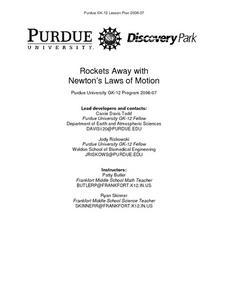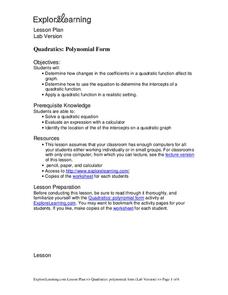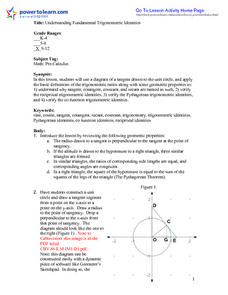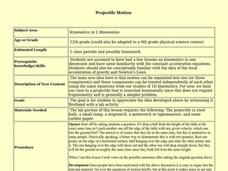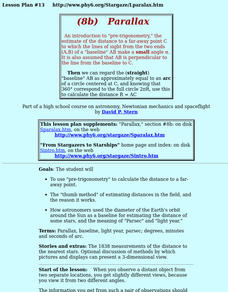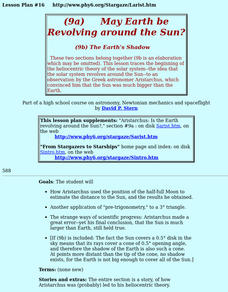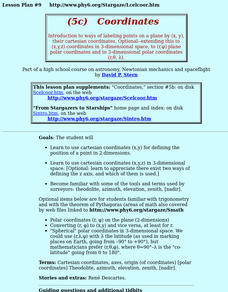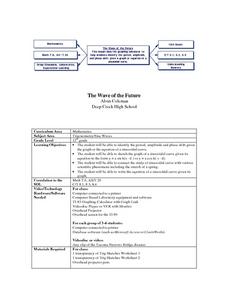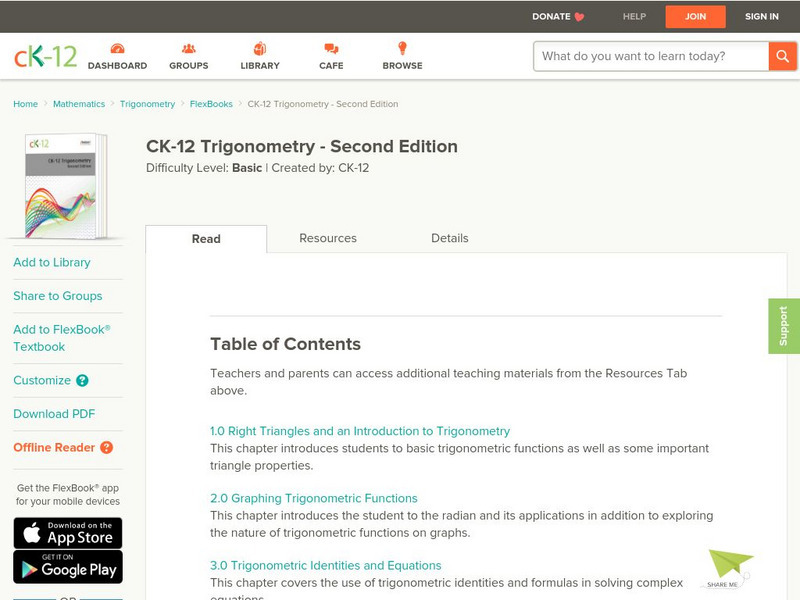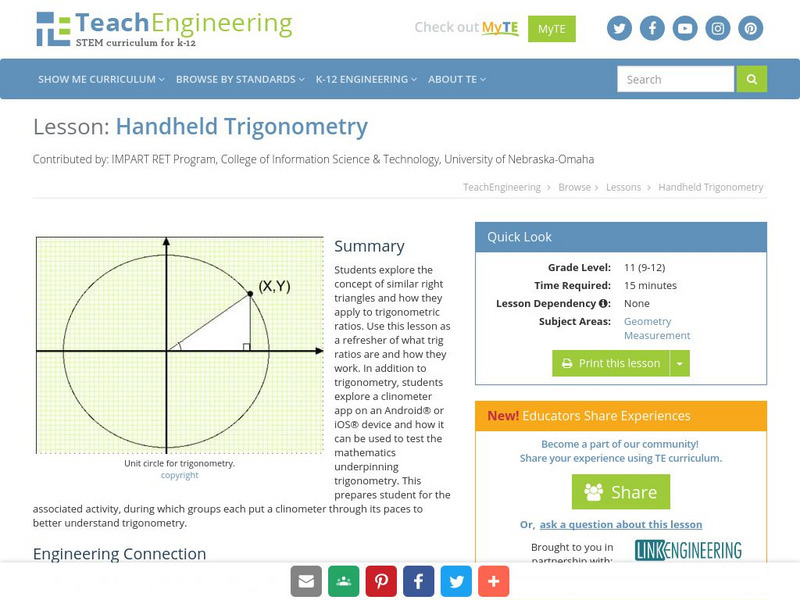Curated OER
Rockets Away with Newton's Laws of Motion
Eighth graders comprehend Newton's Laws of Motion and to use the scientific method in rocketry sub-unit. They work through the scientific method. Students illustrate how science and Newton's Laws can be used in everyday situations and...
Curated OER
Exterior Ballistics
Young scholars explore velocity and trajectory. Using exterior ballistics rules, students predetermine the path of an artillery shell. Given equations and the firing angle, young scholars determine the velocity and horizontal travel. ...
Curated OER
Create a Cookbook
Trios write, design, and produce cookbooks. In a truly collaborative project, they choose what content to include, contribute recipes, and decide on formatting. Then, they reformat all recipes to ensure consistent style, publish the...
Curated OER
Projectile Motion II
Students explore projectile motion and kinematics in two dimensions. They determine, using an adjustable projectile launcher, what angle makes a projectile go the highest.
Curated OER
Rose Curve
Arcsine will be better understood and applied through prediction the number of petals on a rose curve using polar equations. Students relate rose curve to siusoidal functions using the Ti navigator.
Curated OER
Quadratics: Polynomial Form
Students determine how changes in the coefficients in a quadratic function affect its graph. They Solve a quadratic equations. Students Determine how to use the equation to determine the intercepts of a quadratic function. They...
Curated OER
Quadratics: Polynomial Form
Students determine how changes in the coefficients in a quadratic function affect its graph. They determine how to use the equation to determine the intercepts of a quadratic function. Students identify the location of the intercepts...
Curated OER
Estimating With Fractions
Seventh graders, exploring methods to estimate fractions, take notes on estimating fractions, 7th graders write letters to explain the process of estimating fractions and mixed numbers to someone who does not know the concept. Students...
Curated OER
Understanding Fundamental Trigonometric Identities
Young scholars are introduced to the basic trigonometric identities. Using a diagram, they discover why the parts of the unit circle as named as they are and use equations to finalize the Pythagorean trigonometric identities. They also...
Curated OER
Projectile Motion
Twelfth graders experiment with a projectile that is launched horizontally after a demonstration and small discussion about two pennies, one dropping from a table top and the other being slide off the top and hitting the ground at about...
Curated OER
Fraction Equivalence
Fourth graders explore fractions. They compare different fractions using fraction bars. Students find equivalent fractions and they use fraction bars to visualize addition of fractions.
Curated OER
Math Trailblazers and Their Modern Day Connections
There are many ways to connect math with topics your children are interested in.
Curated OER
How Distant is the Moon?--2
Students examine total eclipses of the Sun and their limited regions of totality. They explain that this limited view occurs because the Moon is close enough to us for different points on Earth to view it differently.
Curated OER
Parallax
High schoolers discover how astronomers used the diameter of the Earth's orbit around the Sun as a baseline for estimating the distance of some stars, and the meaning of "Parsec" and "light year."
Curated OER
Exploring Centers of Triangles
Students explore properties of triangles using angle bisectors, incenters, circles, midpoints, and altitudes. They use Geometer's Sketchpad in order to create triangles and their properties.
Curated OER
How Distant Is The Moon?
Students discover how Aristarchus, a Greek astronomer around 230 BC, used a simple observation of the eclipse of the Moon, plus clever reasoning, to deduce the distance of the Moon. They practice the same calculation technique.
Curated OER
May The Earth Be Revolving Around The Sun?
Students trace the beginning of the heliocentric theory of the solar system--the idea that the solar system revolves around the Sun--to an observation by the Greek astronomer Aristarchus, which convinced him that the Sun was much bigger...
Curated OER
May Earth be Revolving around the Sun?
Ninth graders explore how Aristarchus used the position of the half-full Moon to estimate the distance to the Sun, and how he made a great error, but still figured out that the Sun is much larger than Earth.
Curated OER
Coordinates
Students use cartesian coordinates (x,y,z) in 3-dimensional space. [Optional: appreciate there exist two ways of defining the z axis, and which of them is used.] They become familiar with the tools and terms used by surveyors.
Curated OER
The Wave of the Future
Twelfth graders discuss sine curves and enter equations into their graphing calculator then compare different graphs created on their calculators. They identify the period, amplitude and phase shift given the graph or the equation of a...
CK-12 Foundation
Ck 12: Flex Book: Trigonometry
[Free Registration/Login may be required to access all resource tools.] Six-chapter book that introduces students to trigonometry. Topics include right angles, circular functions, trigonometric identities, vectors, and polar equations.
TeachEngineering
Teach Engineering: Handheld Trigonometry
In addition to understanding the concept of similar right triangles and how they apply to trigonometric ratios, students explore a clinometer app, and discover how it can be used to test the mathematics underpinning trigonometry.
Oswego City School District
Regents Exam Prep Center: Teaching Strategies for Algebra 2 & Trigonometry
The mathematics lesson plans consist of teaching strategies and activities for algebra, geometry, and trigonometry. Some strategies included are teaching in block scheduling, working with lower ability students, and planning curriculum....
